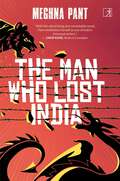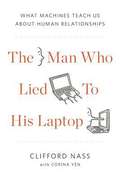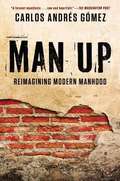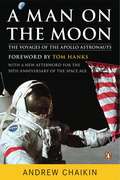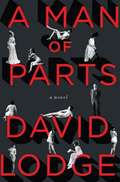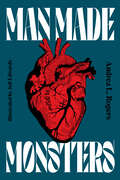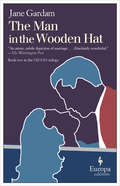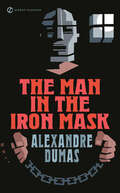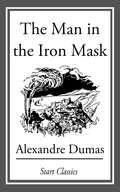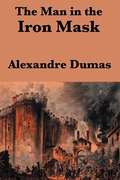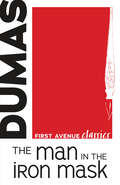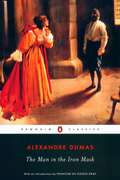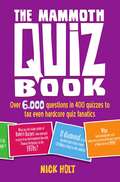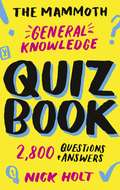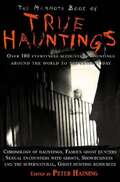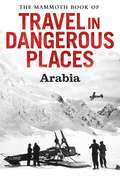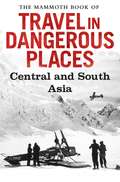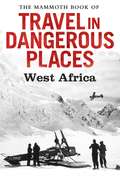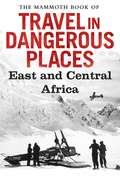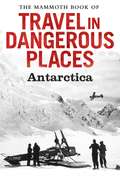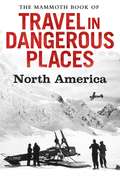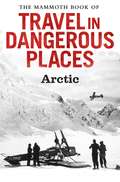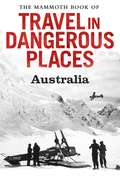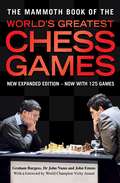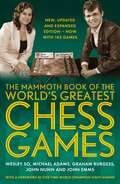- Table View
- List View
The Man Who Lost India
by Meghna PantThe year is 2032. China declares war on India. Pillage and plunder ensues. The war comes to an abrupt halt when a supernatural event saves the obscure town of Lalbag from annihilation. Even as China renews its efforts to invade Lalbag, a greater calamity awaits this sleepy town. A Chinese cop stumbles upon a dangerous secret that threatens to end the town&’s immunity. A fierce and forbidden love between a servant and his mistress destroys two families. Meanwhile, the town&’s richest man becomes afflicted with a terrible disease, the town beauty goes mad when her love betrays, and a psychic turns water into blood, sending the town and its people deeper into tragedy. A dystopian never-been-done-before tale set in – and between – China and India, The Man Who Lost India is a powerful portrayal of love, strife and family in the wake of 21st century&’s biggest war. Incantatory and atmospheric, this is Meghna Pant&’s most ambitious novel yet, full of beauty, bloodshed and undeniable feminist power.
The Man Who Lied to His Laptop: What We Can Learn About Ourselves from Our Machines
by Nass Clifford Yen CorinaLying to a laptop so we don't hurt its feelings; yelling at a GPS in frustration; feeling flattered by random praise from a computer-people act strangely around artificial intelligence. Stranger still that how we act around computers is so similar to how we act towards other people, and that we can learn a lot about human interaction from how we respond to computers. Pioneering researcher Clifford Nass has done numerous experiments centered around human/computer interaction that not only expose the similarities between how we act towards technology and how we act toward people, but illuminate the surprising nature of person-to-person interactions. Nass has been able to show that, from flattery to empathy to loyalty, many aspects of human behavior and emotion are identical whether we're dealing with computers or people. Based on his findings, Nass has developed rules for successful relationships in any area of life. For instance: Don't smile to soften criticism-match your delivery to your content for best results Crack jokes-innocent humor makes people happier with their work without harming their efficiency (and the joke doesn't even have to be funny!) Empathize-acting happy around a sad person (or vice versa) makes that person perform demonstrably worse at task The way we treat computers has deep ramifications for everything from praise and criticism to credibility to team-building. Nass is pushing into the next frontier of behavioral science.
Man Up: Reimagining Modern Manhood
by Carlos Andres GomezInspired by the award-winning poet and actor's acclaimed one-man play, a powerful coming-of-age memoir that reimagines masculinity for the twenty-first-century male. Award-winning poet, actor, and writer Carlos Andrés Gómez is a supremely gifted storyteller with a captivating voice whose power resonates equally on the live stage and on the page. In one of his most moving spoken-word poems, Gómez recounts a confrontation he once had after accidentally bumping into another man at a club. Just as they were about to fight, Gómez experienced an unexplainable surge of emotion that made his eyes well up with tears. Everyone at the scene jumped back, as if crying, or showing vulnerability, was the most insane thing that Gómez could possibly have done.Like many men in our society, Gómez grew up believing that he had to be ready to fight at all times, treat women as objects, and close off his emotional self. It wasn't until he discovered acting that he began to see the true cost of squelching one's emotions--and how aggression dominates everything that young males are taught.Statistics on graduation rates, employment, and teen and young-adult suicide make it clear that the young males in our society are at a crisis point, but Gómez seeks to reverse these ominous trends by sharing the lessons that he has learned. Like Hill Harper's Letters to a Young Brother, Man Up will be an agent for positive change, galvanizing men--but also mothers, girlfriends, wives, and sisters--to rethink and reimagine the way all men interact with women, deal with violence, handle fear, and express emotion.
A Man on the Moon: The Voyages Of The Apollo Astronauts
by Andrew Chaikin Tom HanksWhen astronauts Neil Armstrong and Buzz Aldrin took their 'giant leap for mankind' across a ghostly lunar landscape, they were watched by some 600 million people on Earth 240,000 miles away. <p><p> Drawing on hundreds of hours of in-depth interviews with the astronauts and mission personnel, this is the story of the twentieth century's greatest human achievement, minute-by-minute, through the eyes of those who were there. <p> From the tragedy of the fire in Apollo 1 during a simulated launch, Apollo 8's bold pioneering flight around the moon, through to the euphoria of the first moonwalk, and to the discoveries made by the first scientist on the moon aboard Apollo 17, this book covers it all.
A Man of Parts
by David LodgeThe mind is a time machine that travels backwards in memory and forwards in prophecy, but he has done with prophecy nowa' Sequestered in his blitz-battered house on the rim of Regent's Park, as the second war he has lived through moves into its final phase, the ailing Herbert George Wells, 'H. G. ' to his family and friends, looks back on a life crowded with incident, books, and women. Has it been a success or a failure?Once he was the most famous writer in the world, 'the man who invented tomorrow'; now he feels like yesterday's man, deserted or disparaged by readers, and depressed by the collapse of his utopian dreams for mankind. He recalls his unpromising start in life, and early struggles to acquire an education and make a living; his meteoric rise to fame as a writer with a prophetic imagination and a comic common touch, which brought him into contact with most of the important literary, intellectual, and political figures of his time; his plunge into socialist politics; his belief in free love, and energetic practice of it. Arguing with himself about his conduct, he relives his relationships with two wives and many mistresses, especially the brilliant student Amber Reeves and the gifted writer Rebecca West, both of whom bore him children, with dramatic and long-lasting consequences. Unfolding this astonishing life story, David Lodge achieves a riveting portrait of a man who embodied as many contradictions as he had talents: a socialist who enjoyed his affluence, a Darwinian evolutionist imbued with religious idealism, an acclaimed novelist who turned against the literary novel; a feminist womaniser, sensual yet incurably romantic, irresistible and exasperating by turns to those who knew him personally, but always vitally human.
Man Made Monsters
by Andrea RogersTsalagi should never have to live on human blood, but sometimes things just happen to sixteen-year-old girls. <p><p> Making her YA debut, Cherokee writer Andrea L. Rogers takes her place as one of the most striking voices of the horror renaissance that has swept the last decade. <p><p> Horror fans will get their thrills in this collection – from werewolves to vampires to zombies – all the time-worn horror baddies are there. But so are predators of a distinctly American variety – the horrors of empire, of intimate partner violence, of dispossession. And so too the monsters of Rogers’ imagination, that draw upon long-told Cherokee stories – of Deer Woman, fantastical sea creatures, and more. <p><p> Following one extended Cherokee family across the centuries, from the tribe’s homelands in Georgia in the 1830s to World War I, the Vietnam War, our own present, and well into the future, each story delivers a slice of a particular time period that will leave readers longing for more. <p><p> Alongside each story, Cherokee artist and language technologist Jeff Edwards delivers haunting illustrations that incorporate Cherokee syllabary. But don’t just take it from us – award-winning writer of The Only Good Indians and Mongrels Stephen Graham Jones says that "Andrea Rogers writes like the house is on fire and her words are the only thing that can put it out." <p><p> Man Made Monsters is a masterful, heartfelt, haunting collection ripe for crossover appeal – just don’t blame us if you start hearing things that go bump in the night.
The Man in the Wooden Hat (Old Filth Trilogy #2)
by Jane GardamThe New York Times called Sir Edward Feathers one of the most memorable characters in modern literature. A lyrical novel that recalls his fully lived life, Old Filth has been acclaimed as Jane Gardam?s masterpiece, a book where life and art merge. And now that beautiful, haunting novel has been joined by a companion that also bursts with humor and wisdom: The Man in the Wooden Hat. Old Filth was Eddie?s story. The Man in the Wooden Hat is the history of his marriage told from the perspective of his wife, Betty, a character as vivid and enchanting as Filth himself. They met in Hong Kong after the war. Betty had spent the duration in a Japanese internment camp. Filth was already a successful barrister, handsome, fast becoming rich, in need of a wife but unaccustomed to romance. A perfect English couple of the late 1940s. As a portrait of a marriage, with all the bittersweet secrets and surprising fulfillment of the 50-year union of two remarkable people, the novel is a triumph. The Man in the Wooden Hat is fiction of a very high order from a great novelist working at the pinnacle of her considerable power. It will be read and loved and recommended by all the many thousands of readers who found its predecessor, Old Filth, so compelling and so thoroughly satisfying. .
The Man in the Iron Mask
by Roger Celestin Alexandre Dumas Jack ZipesDeep inside the dreaded Bastille, a young prisoner has languished, his face hidden from all, for eight long years. He knows neither his true identity nor the crime that got him there. Then Aramis, one of the original three musketeers--the finest swordsmen in all of France--bribes his way into the young man's cell to reveal the shocking truth. The revelation of this truth could very well topple Louis XIV, King of France, from his throne--and Aramis aims to do just that. But a daring jailbreak, a brilliant masquerade, and a bloody fight for the throne may make Aramis betray his sacred vow of "All for one, one for all." And in so doing, he will pit musketeer against musketeer, bringing an end to this swashbuckling saga--and either honor or disgrace upon them all.... "The name Alexandre Dumas is more than French--it is universal."--Victor Hugo With a New Introduction by Roger Celestin and an Afterword by Jack Zipes
The Man in the Iron Mask
by Alexandre DumasDeep inside the dreaded Bastille, a young prisoner has languished, his face hidden from all, for eight long years. He knows neither his true identity nor the crime that got him there. Then Aramis, one of the original three musketeers--the finest swordsmen in all of France--bribes his way into the young man's cell to reveal the shocking truth. The revelation of this truth could very well topple Louis XIV, King of France, from his throne--and Aramis aims to do just that. But a daring jailbreak, a brilliant masquerade, and a bloody fight for the throne may make Aramis betray his sacred vow of "All for one, one for all." And in so doing, he will pit musketeer against musketeer, bringing an end to this swashbuckling saga--and either honor or disgrace upon them all.
The Man in the Iron Mask
by Alexandre DumasThe Man in the Iron Mask is the exciting conclusion to the Three Musketeers' adventures. D'Artangan and the Musketeers must attempt tp rescue King Louis XIV's identical twin brother from prison to put him on the throne and thereby save Fouquet from being unfairly destroyed by King Louis.
The Man in the Iron Mask: Classic Literature Easy To Read (First Avenue Classics ™)
by Alexandre DumasThe courageous musketeers—Athos, D'Artagnan, Aramis, and Porthos—return to sword fighting in the final installment of the D'Artagnan Romances. When Aramis visits the Bastille, an infamous French prison, he meets a mysterious man who wears an iron mask and claims to be the King of France's secret twin brother. While France suffers under King Louis XIV's rule, Aramis initiates an elaborate plan to free the prisoner and overthrow the corrupt king with the masked man's help. Will the musketeers survive their most daring adventure yet, filled with nefarious politics, deceitful royals, and clashing loyalties? This is an unabridged English translation of French author Alexandre Dumas's swashbuckling historical novel, which was first published in serial form between 1847 and 1850.
The Man in the Iron Mask
by Alexandre Dumas Joachim Neugroschel Francine du Plessix GrayDeep inside the dreaded Bastille, a twenty-three-year-old prisoner called merely "Philippe" has languished for eight long, dark years. He does not know his real name or what crime he is supposed to have committed. But Aramis, one of the original Three Musketeers, has bribed his way into the cell to reveal the shocking secret that has kept Philippe locked away from the world. That carefully concealed truth could topple Louis XIV, king of France, which is exactly what Aramis is plotting to do!A daring jailbreak, a brilliant masquerade, and a terrifying fight for the throne may make Aramis betray his sacred vow, "All for one, and one for all!" In this concluding episode of the Three Musketeers saga, the actions of Aramis and the other Musketeers - Athos, Porthos, and the most dashing of them all, D'Artagnan - bring either honor or disgrace. . . and a horrifying punishment for the final loser in the battle royal.
The Mammoth Quiz Book: Over 6,000 questions in 400 quizzes to tax even hardcore quiz fanatics
by Nick HoltA comprehensive category killer, with over 6,000 varied questions on every topic imaginable - as well as some you might not imagine. The 400 quizzes are a mixture of general knowledge and specialist rounds all aimed at the popular pub or society quiz market on science and technology; nature and the universe; human geography; history; life as we know it; arts and culture; sports and games; popular culture; celebrities and trivia. The questions are up-to-date, interesting and, unlike much of the competition, accurate.
The Mammoth General Knowledge Quiz Book: 2,800 Questions and Answers
by Nick HoltA bumper collection of 2,800 questions and answers to test even the most ardent quiz fanatic.
The Mammoth Book of True Hauntings (Mammoth Books)
by Peter HainingThis giant collection includes a huge range of 20th-century first-hand accounts of hauntings, such as the American troops who repeatedly saw the ghosts of a dead platoon of men while on patrol in Vietnam; and the witnessed haunting of a house near Tintagel in Cornwall that led actress Kate Winslet to pull out of buying the property.It covers the full spectrum of credible hauntings, from poltergeists (the noisy, dangerous and frightening spirits that are usually associated with pubescent girls, like the Bell Witch), to phantoms (like the Afrits of Saudi Arabia) and seduction spirits (such as the Lorelei, which have lured German men to death).Also included are the notes of the most famous ghost hunters of the twentieth century such as Hans Holzer, Susy Smith (USA); Harry Price, Jenny Randles (UK); Joyce Zwarycz (Australia), Eric Rosenthal (South Africa), and Hwee Tan (Japan). Plus essays by such names as Robert Graves, Edgar Cayce, and M. R. James outlining their own - often extraordinary - conclusions as to just what ghosts might be; along with a full bibliography and list of useful resources.Praise for MBO Haunted House Stories:'A first rate list of contributors ... Hair raising!' Time Out'All we need say is buy it.' Starlog
The Mammoth Book of Travel in Dangerous Places: Arabia
by John KeayEscape from Riyadh - William Gifford PalgraveA scholar and a solider, a Jesuit and a Jew, a French spy and a British ambassador- Palgrave was a man of contradictions, all of them highly compromised when in 1862-3, fortified by Pius IX's blessing and Napoleon III's cash, he attempted the first west- east crossing of the Arabian peninsular. To steely nerves and a genius for disguise he owed his eventual success; but not before both were sorely tested when, as a Syrian doctor, he became the first European to enter Riyadh. The desert capital of the fanatical Wahabis, dangerous for an infidel at the best of times, was then doubly so as the sons of the ageing King Feisal intrigued for power.Desert Days - Charles Montagu DoughtyDuring two years (1875-7) wandering in Central Arabia Doughty broke little new ground; dependant on desert charity, his achievement was simply to have survived. Yet his book, Arabia Deserta, was instantly recognized as a classic. Its eccentric prose proves well suited to that minute observation and experience of Bedouin life which was Doughty's main contribution to exploration. T.E. Lawrence called it "a bible of a kind"; both syntax and subject matter have biblical resonances, as in this description of a day's march, or rahla.
The Mammoth Book of Travel in Dangerous Places: Central and South Asia
by John KeayAlarms amongst the Uzbeks - Alexander BurnesOf all the "forbidden" cities (Timbuktu, Mecca, Lhasa, Riyadh and so on) none enjoyed a more fearsome reputation that Bukhara in Uzbekistan. The first British Indian expedition, that of William Moorcroft in 1819-26, had never returned. Moorcroft's disappearance, like that of Livingstone or Franklin, posed a challenge in itself and preyed on the minds of his immediate successors. Heavily disguised and in an atmosphere of intense intrigue, Burnes and Dr James Gerard crossed the Afghan Hindu Kush in 1832 and approached the scenes of Moorcroft's discomfiture. They would both return; and "Bukhara Burnes" would become the most renowned explorer of his day.On the Roof of the World - John WoodIn 1937 Alexander Burnes returned to Afghanistan on an official mission. Amongst his subordinates was a ship's lieutenant who, having surveyed the navigational potential of the river Indus, took off on a mid-winter excursion into the unknown Pamirs between China and Turkestan. Improbably, therefore, it was John Wood, a naval officer and the most unassuming of explorers, who became the first to climb into the hospitable mountain heartland of Central Asia and the first to follow to its source the great river Oxus (or Amu Darya.)Exploring Angkhor - Henri MouhotBorn in France, Mouhot spent most of his career in Russia as a teacher and then in the Channel Islands. A philologist by training, he also took up natual history and it was with the support of the Royal Zoological Society that in 1858 he set out for South East Asia. From Siam (Thailand) he penetrated Cambodia and Laos, where he died; but not before reaching unknown Angkhor and becoming the first to record and depict the most extensive and magnificent temple complex in the world. His discovery provided the inspiration for a succession of subsequent French expeditions up the Mekong.Over the Karakorams - Francis Edward YounghusbandAs leader of the 1904-5 British military expedition to Lhasa and as promoter of the early assaults on Mount Everest, Younghusband came to epitomize Himalayan endeavour. To the mountain he also owed his spiritual conversion from gung-ho solider to founder of the World Congress of Faiths. His initiation came in 1887 when, as the climax to journey from Peking across the Gobi desert, he determines to reach India over the unexplored Mustagh Pass in the Karakorams - "the most difficult and dangerous achievement in these mountains so far" (S.Hedin).Trials in Tibet - Ekai KawaguchiBy the 1890's the capital of "forbidden" Tibet, unseen by a foreigner since Huc's visit, represented the greatest challenge to exploration. Outright adventurers like the dreadful Henry Savage Landor competed with dedicated explorers like Sven Hedin, all succumbed to to a combination of official vigilance and physical hardship. The exception, and the winner in "the race for Lhasa", was a Buddhist monk from Japan whose expedition consisted of himself and two sheep. Ekai Kawaguchi was supposedly a pilgrim seeking religious texts. His faith was genuine and often tested, as during this 1900 excursion into western Tibet; but he is also thought to have been an agent of the British government in India.
The Mammoth Book of Travel in Dangerous Places: West Africa
by John KeayAlone in Africa - Mungo ParkPark's 1795-7 odyssey in search of the Niger first awakened the world to the feasibility of a white man penetrating sub-Saharan Africa. But unlike his illustrious successors, this quiet tenant farmer's son from the Scottish Borders travelled alone; relieved of his meager possessions, he was soon wholly dependant on local hospitality. In what he called "a plain unvarnished tale" he related horrific ordeals with admirable detachment - never more tested than on his return journey through Bamako, now the capital of Mali.The Road to Kano - Hugh ClappertonIn one of exploration's unhappier sagas two Scots, Captain Hugh Clapperton and Dr. Walter Oudney, were saddled with the unspeakable Major Dixon Denham on a three year journey to Lake Chad and beyond. Clapperton mapped much of northern Nigeria and emerged with credit. Major Denham also excelled himself, twice absconding, then accusing Oudney of incompetence and Clapperton of buggery. Happily the Major was absent in 1824, after nursing his dying friend, Clapperton became the first European to reach Kano.Down the Niger - Richard LanderAs Clapperton's manservant, Lander attended his dying master on his 1825 expedition to the Niger and was then commissioned, with his brother John, to continue the exploration of the river. The mystery of its lower course was finally solved when in 1831 they sailed down through Nigeria to the delta and the sea. Unassuming Cornishmen, the Landers approached their task with a refreshing confidence in goodwill of Africans. It paid of in a knife-edge encounter at the confluence of the Benoue, although Richard subsequently paid the price with his life.Arrival in Timbuktu - Heinrich BarthBorn in Hamburg, Barth was already an experienced traveler and a methodical scholar when in 1850 he joined a British expedition to investigate Africa's internal slave trade. From Tripoli the expedition crossed the Sahara to Lake Chad. Its leader died but Barth continued on alone, exploring vast tract of the Sahel from northern Cameroon to Mali. Timbuktu, previously visited only by A.G. Laing and René Caillié, provided the climax as Barth, in disguise, approached the forbidden city by boat from the Niger.My Ogowé Fans - Mary KingsleySelf-educated while she nursed her elderly parents, Mary Kingsley had known only middle-class English domesticity until venturing to West Africa in 1892. Her parents had died and, unmarried, she determined to study "fish and fetish" for the British Museum. Her 1894 ascent of Gabon's Ogowé River (from Travels in West Africa, 1897) established her a genuine pioneer and an inimitable narrator. She died six years later while nursing prisoners during the Boer War.
The Mammoth Book of Travel in Dangerous Places: East and Central Africa
by John KeayAmong the Sudanese - James BruceBruce reached the source of the Blue Nile in 1771, a century before the search for the source of the White Nile became headline news. His descriptions of the cruelties and orgies at Gondar, the Ethiopian capital, were greeted with disbelief; so was his account of the Sudanese rulers, and their queens, at Sennar. He was later shown to be an accurate observer as well as the eighteenth century's most intrepid traveller.Not the Source of the Nile - Richard Francis BurtonIn Burton a brilliant mind and dauntless physique were matched with a restless spirit and a deeply troubled soul to produce the most complex of characters. Contemptuous of other mortals, including Speke, his companion and rival, he found solace only in the extremities of erudition and adventure. A Glimpse of Lake Victoria - John Hanning SpekeIn July 1858, while returning from Lake Tanganyika with Burton, Speke made a solo excursion to the north in search of an even larger lake reported by an Arab informant. Although partially blind and unable to ascertain its extent, he named this lake "Victoria" and boldly declared it the long sought source of the White Nile. The Reservoir of the Nile - Samuel White BakerAmongst professional explorers and big game hunters, none was as successful as Baker. A bluff and plausible figure, wealthy and resourceful, he conducted his explorations on the grand scale, invariably reached his goal and invariably reaped the rewards.Last Days - David LivingstoneLivingstone was nurtured in poverty and religious fervour. He reached southern Africa as a missionary doctor but, more suited to solitary exploration, edged north in a series of pioneering journeys into the interior. Encounters on the Upper Congo - Henry Morton StanleyStanley made his name as an explorer by tracking down Livingstone in 1871. But obscure Welsh origins, plus the adoption of US citizenship and professional journalism, did not endear him to London's geographical establishment. His response was to out-travel all contemporaries, beginning with the first ever coast-to-coast crossing of equatorial Africa. A Novice at Large - Joseph ThomsonBarely twenty and just out of Edinburgh University, Thompson was unexpectedly employed on the Royal Geographical Society's 1878 expedition to the Central African lakes. Unlike Burton he admired Africans; unlike Stanley he would not fight them. His motto - "he who goes slowly, goes safely; he who goes safely, goes far" - was never more seriously tested that when, just six weeks inland from Dar es Salaam, his first expedition lost Keith Johnston, its leader and Thompson's only European companion.
The Mammoth Book of Travel in Dangerous Places: Antarctic
by John KeayFarthest South - Ernest Henry ShackletonBorn in Ireland, Shackleton joined the merchant navy before being recruited for Captain Scott's 1901 expedition to Antarctica. He was with Scott on his first attempt to reach the South Pole and, though badly shaken by the experience, realized that success was now feasible. In 1907, with a devoted team but little official support, he launched his own expedition. A scientific programme gave it respectability but Shackleton was essentially an adventurer, beguiled alike by the challenge of the unknown and the reward of celebrity. His goal was the Pole, 90 degrees south, and by Christmas 1908 his four-man team were already at 85 degrees.The Pole at Last - Roald AmundsenAmundsen's 1903-6 voyage through North West Passage had heralded a new era in exploration. The route by then was tolerably well known and its environs explored. His vessel was a diminutive fishing smack, his crew a group of Norwegian friends, and his object simply to be the first to have sailed through. He did it because it had not been done and "because it was there". The same applied to his 1911 conquest of the South Pole. Shackleton had shown the way and Amundsen drew the right conclusions. The Pole was not a scientist's playground nor a mystic's dreamland; it was simply a physical challenge. Instead of officers, gentlemen and scientists, he took men who could ski and dogs that could pull; if need be, the former could eat the latter. The only real anxiety was whether they would forestall Scott.In Extremis - Robert Falcon ScottScott was chosen to lead the 1900-4 British National Antarctic Expedition. Its considerable achievements seemed to vindicate the choice of a naval officer more noted for integrity and courage than any polar experience, and, following Shackleton's near success, in 1910 Scott again sailed south intending to combine a busy scientific programme with a successful bid for the South Pole. On 17 January 1912 he and four others duly reached the Pole, indeed they sighted a real pole and it bore a Norwegian flag; Amundsen had got there 34 days ahead of them. Bitterly disappointed, soon overtaken by scurvy and bad weather, and still dragging sledges laden with geological specimens, they trudged back. The tragedy which then unfolded eclipsed even Amundsen's achievement and won them an immortality beyond the dreams of any explorer.
The Mammoth Book of Travel in Dangerous Places: North America
by John KeayFirst Crossing of America - Alexander Mackenzie"Endowed by nature with an acquisitive mind and an enterprising spirit", Mackenzie, a Scot engaged in the Canadian fur trade, resolved, as he out it "to test the practicability of penetrating across the continent of America". In 1789 he followed a river (the Mackenzie) to the sea; but it turned out to be the Arctic Ocean. He tried again in 1793 and duly reached the Pacific at Queen Charlotte Sound in what is now British Columbia. Although this was his first recorded overland crossing of the continent, Mackenzie was not given to trumpeting his achievement. In his narrative it passes without celebration and very nearly without mention.Meeting the Shoshonee - Meriwether LewisAs Thomas Jefferson's personal secretary, Lewis was chosen to lead the US government's 1804-5 expedition to explore (and to establish US interests) from Mississippi to the Pacific. Travelling up the Missouri river to the continental divide in Montana, Lewis left the main party under his colleague William Clark, and scouted ahead. With everything now dependant on securing the goodwill of the formidable Shoshonee, he showed admirable caution; but the issue was eventually decided by a fortuitous reunion between the Indian wife of one of his men and her long-lost brethren.
The Mammoth Book of Travel in Dangerous Places: Arctic
by John KeayFour Years in the Ice - John RossDisgraced and dishonored for his report of an imaginary mountain range blocking the most likely access to the North West Passage, in 1829 Ross returned to Canada's frozen archipelago to vindicate his reputation. He rounded the north of Baffin Island and entered what he named the Gulf of Boothia. Here the Victory, his eccentric paddle-steamer, became frozen to the ice. Through three tantalizingly brief summers the expedition tried to find a way out and through four long winters then endured the worst of Arctic conditions in a makeshift camp. In July 1832, with the ship long since abandoned, Ross made what must be their last bid to reach open water.Living off Lichen and Leather - John FranklinIn 1845, looking again for the North West Passage, two well-crewed ships under Franklin's command sailed into the Canadian Arctic and were never seen again. There began the most prolonged search ever mounted for an explorer. For Franklin had been lost before and yet had survived. In 1821, returning from an overland reconnaissance of the Arctic coast north of Great Slave Lake, he and Dr. John Richardson, with two Lieutenants and about a dozen voyageurs (mostly French), had run out of food and then been overtaken by the Arctic weather. Franklin's narrative of what is probably the grisliest journey on record omits unpalatable details, like the cannibalism of one of his men, the murder of Lieut. Hood, and Richardson's summary shooting of the murderer; but it well conveys the debility of men forced to survive on leather and lichen (triple de roche) plus that sense of demoralization and disintegration that heralds the demise of an expedition.Adrift on an Arctic Ice Floe - Fridtjof Nansen Norwegian patriot, natural scientist, and Nobel laureate, Nansen caught the world's imagination when he almost reached the North Pole in 1895. The attempt was made on skis from specially reinforced vessel which, driven into the ice, was carried from Siberia towards Greenland. The idea stemmed from his first expedition, an 1888 crossing of Greenland. Then too he had used skis and then too, unwittingly and nearly disastrously, he had taken to the ice. Arrived off Greenland's inhospitable east coast, he had ordered his five-man party to spare their vessel by crossing the off-shore ice floe in rowing boats. A task which he expected to take a few hours turned into an involuntary voyage down the coast of twelve days.The Pole is Mine - Robert Edwin Peary Born in Pennsylvania and latterly a commander in the US navy, Peary had set his sights on claiming the North Pole from childhood. It was not just an obsession but a religion, his manifest destiny. Regardless of cost, hardship, and other men's sensibilities, he would be Peary of the Pole, and the Pole would be American. Critics might carp over the hundreds of dogs that were sacrificed to his ambition, over the chain of supply depots that would have done credit to a military advance, and over the extravagance of Peary's ambition, but success, in 1909, came only after a catalogue of failures; and even then it would be disputed. Under the circumstances his triumphalism is understandable and, however distasteful, not unknown amongst other Polar travelers.
The Mammoth Book of Travel in Dangerous Places: Australia
by John KeayLandfall at Botany Bay - James CookThe son of a Yorkshire farm labourer, Cook won distinction as a naval hydrographer but was still a controversial choice to command a voyage of scientific observation to the Pacific in 1768. Its results, including the first coastal surveys of New Zealand and eastern Australia, led to a second voyage to the south Pacific and a third to the north Pacific, during which he was killed in a fracas with the Hawaiians. It was a tragic end for one whose humble origins disposed him to respect indigenous peoples. "They are far happier than we Europeans", he noted of Australia's aborigines following a brief encounter at Botany Bay (Sydney), the first European landing on the Pacific coast, in 1770.Escape from the Outback - Charles SturtAfter pioneering journeys to the Darling and Murray rivers, in 1844-5 Sturt headed north for the heart of Australia. Since the continent appeared to have few seaward draining rivers it was assumed that, alike Africa, it must boat an inland lake region; a boat was therefore included amongst the expeditions equipment. But Sturt failed to reach the geographical centre of the continent, and the largest stretch of water found was at Coopers Creek, later to figure so prominently in the endeavours of Burke and Wills. Sturt's painful retreat during the hottest summer on record formed a fitting prelude to the Wills saga.Death at Coopers Creek - William John WillsIn early 1861 Robert O'Hara Burke, William Wills and John King reached Australia's northern coast on the Gulf of Carpentaria, thus completing the first transcontinental crossing. Returning the way they had come, after four months of appalling hardship they staggered into Sturt's Coopers Creek where men and supplies had been left to await their return. They were just eight hours too late; the relief party, despairing of their return, had left that very morning. One of exploration's most poignant moments was followed by one of its most protracted tragedies as the expedition tried to extricate itself, failed, faded, and died. Only King survived; three months later he was discovered living with the aborigines; Will's heartbreaking journal was found lying beside his skeleton.To See the Sea - John McDouall StuartModest, dedicated, immensely tough and thoroughly congenial, Stuart was very much an explorer's explorer. With little support or fuss he began probing north from Adelaide in the late 1850's. In 1860 he was the first to reach the centre of the continent, thus completing the work of Sturt. Although Burke and Wills just beat him in the race to cross the continent, Stuart's 1862 route was much longer and more difficult; and he did actually reach the sea. He was also to return alive.
The Mammoth Book of the World's Greatest Chess Games: New edn
by Graham Burgess John Nunn John EmmsThe 125 greatest chess games of all time, selected, analysed, re-evaluated and explained by a team of British experts and illustrated with over 1,000 chess diagrams. Join the authors in studying these games, the cream of two centuries of international chess, and develop your own chess-playing skills - whatever your current standard. Instructive points at the end of each game highlight the lessons to be learned.First published in 1998, a second edition of The Mammoth Book of the World's Greatest Chess Games in 2004 included an additional 12 games. This edition includes a further 13 games as well as some significant revisions to the analysis and information regarding other games in earlier editions of the book, facilitated by the use of a variety of chess software.
The Mammoth Book of the World's Greatest Chess Games: New edn
by Wesley So Michael Adams Graham Burgess John Nunn John EmmsImprove your chess by studying the greatest games of all time, from Adolf Anderssen's 'Immortal Game' to Magnus Carlsen's world championship victories, and featuring a foreword by five-times World Champion Vishy Anand.This book is written by an all-star team of authors. Wesley So is the reigning Fischer Random World Champion, the 2017 US Champion and the winner of the 2016 Grand Chess Tour. Michael Adams has been the top British player for the last quarter of a century and was a finalist in the 2004 FIDE World Championship. Graham Burgess is the author of thirty books, a former champion of the Danish region of Funen, and holds the world record for marathon blitz chess playing. John Nunn is a three-time winner of both the World Solving Championship and the British Chess Federation Book of the Year Award. John Emms is an experienced chess coach and writer, who finished equal first in the 1997 British Championship and was chess columnist of the Young Telegraph.The 145 greatest chess games of all time, selected, analysed, re-evaluated and explained by a team of British and American experts and illustrated with over 1,100 chess diagrams. Join the authors in studying these games, the cream of two centuries of international chess, and develop your own chess-playing skills - whatever your current standard. Instructive points at the end of each game highlight the lessons to be learned.First published in 1998, a second edition of The Mammoth Book of the World's Greatest Chess Games in 2004 included an additional twelve games. Another new edition in 2010 included a further thirteen games as well as some significant revisions to the analysis and information regarding other games in earlier editions of the book, facilitated by the use of a variety of chess software. This 2021 edition, further updated and expanded, now includes 145 games.The authors have made full use of the new generation of chess analysis engines that apply neural-network based AI.
